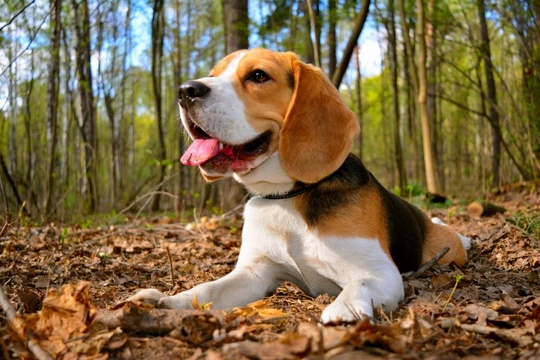
Troubleshooting and tips for training your pet Beagle
The Beagle dog breed is one that has only really started to become popular as a pet rather than a working dog over the last ten or so years, due to the unique challenges that accompany keeping dog that has first and foremost been bred to work within the average domestic home.
Whilst they can make for hugely rewarding pets with the right owner and in the right situation, the Beagle is not generally considered to be a good pick for the first time dog owner or one that is not experienced with the breed as a whole.
However, ensuring that you do plenty of research and are prepared to manage the dog’s unique traits and needs will take you a long way along the right path, and if you have your heart set on owning a Beagle and understand the challenges before you make a purchase, you will stand a good chance of success.
If you are considering buying or adopting a beagle, are still trying to rule the breed in or out or are simply interested in the logistics of keeping such a unique breed as a family pet, read on to learn more about the Beagle personality, how to approach training, and some of the most common challenges that the breed presents.
More about the Beagle
The Beagle is a small to medium sized dog from the hound grouping, and they have a long recorded history within the UK of being bred and trained as working dogs to hunt for small prey such as hares using their superior scenting abilities. They are similar in both appearance and core traits to the larger foxhound breed, and up until a decade or so ago when they started being appreciated on a wider scale as pets, would almost exclusively have been kept as working dogs and generally, living within a pack kennel environment rather than within the home.
They are hugely lively and have great stamina, and they are also one of the highly-developed sense of smell of any dog breed, making them keen scent hounds with bags of tenacity, endurance and enthusiasm for the chase.
They are also very enthusiastic about life, can be very funny, and are highly affectionate, keen to please, and love their families. However, they are reasonably high maintenance dogs as domestic pets, as they do not thrive if left alone very often and will soon become unhappy and potentially destructive if they do not get lots of affection, exercise and attention.
Training a Beagle
The Beagle’s combination of intelligence, high energy levels and a willingness to please make the Beagle capable of learning a lot of complex and higher level commands, but they also make training the dog successfully challenging for those who are not familiar with the breed and/or are not experienced trainers.
The key challenges when it comes to training the Beagle are being able to catch and keep their attention long enough to teach them new skills, and the same challenge arises when trying to get the dog to execute their learned commands reliably when a lot of stimulus is going on around them.
They also need to get enough exercise to keep them fit, happy and fulfilled, and a Beagle that is continually full of beans because they are not getting enough walks will be virtually impossible to train in any meaningful way.
Beagle training needs to be adaptive and patient, even when the dog’s behaviour is very frustrating-it can take a lot of effort to achieve advancement, and good work can easily be undone if you slip up or lose your temper along the way. Regular short, exciting training sessions with lots of praise and rewards work best for the Beagle, and like all dogs, they will need to have their skills refreshed and worked on regularly throughout their lives.
Potential problems
One of the first problems that many Beagle owners face is being able to house train their new pup successfully - Beagles are widely accepted as being one of the most challenging breeds to fully house train. Whilst every dog is different and some Beagle owners undoubtedly managed to train their dog with no problems, you should be ready to face the fact that your new Beagle may be a little slow on the uptake when it comes to where they do their business!
The problem is likely to be even larger if buying from a working kennels, where the dogs were not born into domestic life and have no frame of reference.
However, there is no magic key to successfully house training any dog breed-a high level of vigilance, and the patience for lots of calm repetition is required!
Another common Beagle problem is poor recall, running off and hunting/chasing-all of which can be attributed to the dog’s keen sense of smell and high prey drive.
Ensuring that the dog is fulfilled and well exercised can help, but when it comes to recall, this is one breed where you may have to accept that you may never be able to achieve 100% compliance with the command in highly loaded situations.
Providing a secure enclosed area for running off the lead and muzzling your dog to protect wildlife can help too, of course.
Additionally, a Beagle needs excellent fencing and vigilance to be paid to doors and entrances, as they are inquisitive and fun loving dogs that will happily take themselves off for a wander if they are bored.
Ultimately, ensuring that the dog gets lots of exercise, stimulation and attention will help to keep your Beagle calm and receptive to commands-but not every dog lover is able to fulfil their needs in all of these respects.



